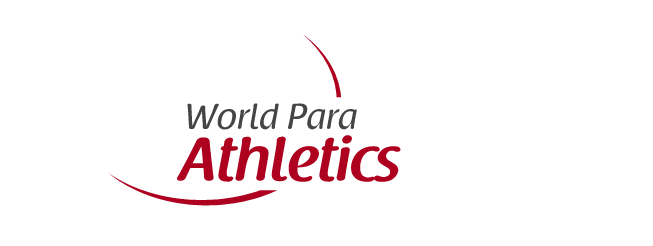World Para Athletics Classification
This is a brief overview of classification in the sport and is in no way legally binding. In all cases the sport-specific classification rules will take precedence. For further questions please contact classification@worldparaathletics.org.
WHAT IS CLASSIFICATION?
Classification determines which athletes are eligible to compete in a sport and how those athletes are then grouped together for competition in order to minimise the impact of the athletes' impairments on sport performance. This is done to safeguard the integrity of fair competition.
Classification is sport-specific because an impairment affects the ability to perform in different sports to a different extent. As a consequence, an athlete may meet the criteria in one sport, but may not meet the criteria in another sport. Having an impairment is thus not sufficient for an athlete to compete in Para sport.
The groupings of athletes by the degree of activity limitation resulting from their impairments are called 'Sport Classes'. This, to a certain extent, is similar to grouping athletes by age, gender or weight.
Classification across the Paralympic Movement is governed by the IPC Athlete Classification Code and Standards.
More information about classification can be found here.
CLASSIFICATION IN PARA ATHLETICS
The details of classification in Para athletics are set out in the World Para Athletics Classification Rules and Regulations (link provided below).
To be eligible to compete in Para athletics, a person must have an eligible impairment and meet the minimum impairment criteria set out in the World Para Athletics Classification Rules and Regulations.
ELIGIBILE IMPAIRMENTS FOR PARA ATHLETICS
There are 10 eligible impairment types in Para Athletics: eight physical impairments as well as vision impairment and intellectual impairment.
| IMPAIRMENT TYPE | DESCRIPTION |
|---|---|
| Impaired Muscle Power |
Athletes with Impaired Muscle Power have a Health Condition that either reduces or eliminates their ability to voluntarily contract their muscles in order to move or to generate force. Examples of an Underlying Health Condition that may lead to Impaired Muscle Power include spinal cord injury (complete or incomplete, tetra-or paraplegia or paraparesis), muscular dystrophy, post-polio syndrome and spina bifida. |
| Impaired Passive Range of Movement |
Athletes with Impaired Passive Range of Movement have a restriction or a lack of passive movement in one or more joints. Examples of an Underlying Health Condition that may lead to Impaired Passive Range of Movement include arthrogryposis and contracture resulting from chronic joint immobilisation or trauma affecting a joint. |
| Limb Deficiency | Athletes with Limb Deficiency have total or partial absence of bones or joints as a consequence of trauma (for example traumatic amputation), illness (for example amputation due to bone cancer) or congenital limb deficiency (for example dysmelia). |
| Leg Length Difference | Athletes with Leg Length Difference have a difference in the length of their legs as a result of a disturbance of limb growth, or as a result of trauma. |
| Short Stature |
Athletes with Short Stature have a reduced length in the bones of the upper limbs, lower limbs and/or trunk. Examples of an Underlying Health Condition that may lead to Short Stature include achondroplasia, growth hormone dysfunction, and osteogenesis imperfecta. |
| Hypertonia |
Athletes with Hypertonia have an increase in muscle tension and a reduced ability of a muscle to stretch caused by damage to the central nervous system. Examples of an Underlying Health Condition that may lead to Hypertonia include cerebral palsy, traumatic brain injury and stroke. |
| Ataxia |
Athletes with Ataxia have uncoordinated movements caused by damage to the central nervous system. Examples of an Underlying Health Condition that may lead to Ataxia include cerebral palsy, traumatic brain injury, stroke and multiple sclerosis. |
| Athetosis |
Athletes with Athetosis have continual slow involuntary movements. Examples of an Underlying Health Condition that may lead to Athetosis include cerebral palsy, traumatic brain injury and stroke. |
| Vision Impairment |
Athletes with Vision Impairment have reduced, or no vision caused by damage to the eye structure, optical nerves or optical pathways, or visual cortex of the brain. Examples of an Underlying Health Condition that may lead to Vision Impairment include retinitis pigmentosa and diabetic retinopathy. |
| Intellectual Impairment | Athletes with an Intellectual Impairment have a restriction in intellectual functioning and adaptive behaviour in which affects conceptual, social and practical adaptive skills required for everyday life. This Impairment must be present before the age of 18. |
SPORT CLASSES IN PARA ATHLETICS
Athletes are grouped into the following sport classes in Para athletics. The sport class profiles are set out in World Para Athletics Classification Rules and Regulations.
TRACK AND JUMP (PREFIX T FOR TRACK)
DISCIPLINE: Running and jumping (20 classes)
SPORT CLASSES (Impairment types):
- T11-13 (Vision impairment)
- T20 (Intellectual impairment)
- T35-38 (Co-ordination impairments (hypertonia, ataxia and athetosis))
- T40-41 (Short stature)
- T42-44 (Lower limb competing without prosthesis affected by limb deficiency, leg length difference, impaired muscle power or impaired passive range of movement)
- T45-47 (Upper limb/s affected by limb deficiency, impaired muscle power or impaired passive range of movement)
- T61-64 (Lower limb/s competing with prosthesis affected by limb deficiency and leg length difference)
DISCIPLINE: Wheelchair racing (7 classes)
SPORT CLASSES (Impairment types):
- T32-34 (Co-ordination impairments (hypertonia, ataxia and athetosis))
- T51-54 (Limb deficiency, leg length difference, impaired muscle power or impaired passive range of movement)
DISCIPLINE: Frame Running (2 classes)
SPORT CLASSES (Impairment types)
- T71-T72 (athletes with co-ordination impairment (hypertonia, ataxia, athetosis) competing in Frame Running events in Sport Classes T71 T72.
-
THROWS (PREFIX F FOR FIELD)
DISCIPLINE: Standing throws (19 classes)
SPORT CLASSES (Impairment types):
- F11-13 (Vision impairment)
- F20 (Intellectual impairment)
- F35-38 (Co-ordination impairments (hypertonia, ataxia and athetosis))
- F40-41 (Short stature)
- F42-44 (Lower limb competing without prosthesis affected by limb deficiency, leg length difference, impaired muscle power or impaired passive range of movement)
- F45-46 (Upper limb/s affected by limb deficiency, impaired muscle power or impaired passive range of movement)
- F61-64 (Lower limb/s competing with prosthesis affected by limb deficiency and leg length difference)
DISCIPLINE: Seated throws (11 classes)
SPORT CLASSES (Impairment types):
- F31-34 (Co-ordination impairments (hypertonia, ataxia and athetosis))
- F51-57 (Limb deficiency, leg length difference, impaired muscle power or impaired range of movement)
FORMS AND DOCUMENTS
MEDICAL DIAGNOSTICS FORMS FOR ALL ATHLETES
PHYSICAL IMPAIRMENT: It is the responsibility of the athlete and the NPC to submit a copy of the Medical Diagnostics Form (MDF) and all relevant supporting medical documentation via the SDMS online system.
VISION IMPAIRMENT: It is the responsibility of the athlete and the NPC to submit a copy of the VI Medical Diagnostics Form (MDF) and all relevant supporting medical documentation via the SDMS online system.
INTELLECTUAL IMPAIRMENT: For athletes with intellectual impairments, must meet the VIRTUS II 1 Eligibility Criteria and shall be listed on the VIRTUS International Eligibility Master list. It is the responsibility of the athlete and the NPC to submit a copy of TSAL-Q form via the SDMS online system.
Please find the link to the forms and documents here.
CLASSIFICATION RULES AND REGULATIONS
World Para Athletics Classification Rules and Regulations February 2023

 Facebook
Facebook
 Instagram
Instagram
 Twitter
Twitter
 Youtube
Youtube